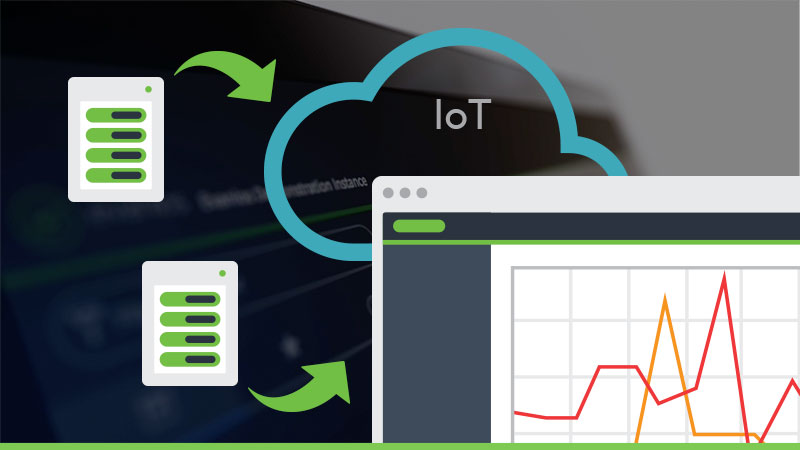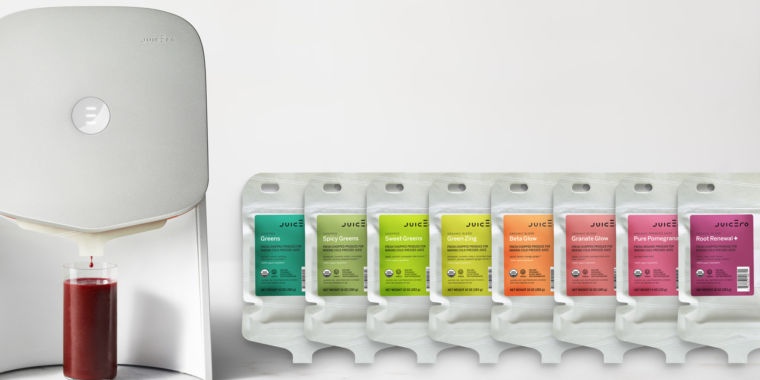
Explosive growth is driving new IoT monitoring requirements. Do you have a plan to intelligently integrate, and manage all of the data?
What’s Fueling IoT Monitoring?
Barely over a decade ago, the internet was a fixed point - something we tethered to at home or in the office. Next came wifi, then smartphones, and now all of a sudden (or so it seems), consumers have an ever-widening selection of intelligent devices. Our TVs, watches and home appliance are all connected. But it doesn’t stop there. Commercial and industrial equipment is increasingly wired now, too. Driverless cars, anyone? How about assembly lines that monitor their own efficiency?
With all of the hype surrounding IoT, it’s kind of fun to note the occasional flop (we hear there’s a brisk aftermarket in “like new” Juiceros). But those turn out to be the exceptions. Though it’s well known that most new products fail, IoT as a whole is rocketing forward.No, you do not need a bluetooth enabled juicer. Neither did anyone else, for that matter.

No, you do not need a bluetooth enabled juicer. Neither did anyone else, for that matter.
IoT uses the cloud to connect many categories of products that until recently, fell very much into the “offline” category. As noted above, there is a growing list of reasons that all if this interconnectedness is actually beneficial. But there’s a down side, too.
Imagine that you were the IT Tools and Process at Amazon, and found yourself in a Product Management meeting to hear the new pitch for the company’s next-biggest-thing: the Dash Button. Basically, the company said “We know you are responsible for managing hundreds of thousands of devices and applications. Since we’re doing such a good job, we’re going to throw a few million additional sensors at you. Good luck with that!” Eek!
Another example: Computer manufacturers who are introducing Device-as-a-service. How are they building out their cloud infrastructures, including edge monitoring, to support new data influx at incredible orders of magnitude? In 2015 alone, 238 million computers were sold globally. Back then, monitoring was mostly on-demand (e.g. crash reporter). In the near future, nearly all computers will be sending data across the cloud constantly. Yikes!
And beyond computers, Gartner estimates that we’ll surpass 20 billion IoT units by 2020. That’s a lot of network traffic, and a lot of data to sort through.
If you are the person responsible for IoT monitoring, we wouldn’t blame you for being at least a little bit afraid. But there’s hope! And hey...it is exciting.
Real-Time IoT Monitoring is Becoming the Norm.
Whether you are considering centrally managed or cloud computing resources (or both!) to handle all of your IoT data, you’ll need to review the processes (and tools) that you use to evaluate consumption and management of the overlapping edge and backend worlds. You’ll experience a growing need to maintain high availability while responding to IoT monitoring alerts, as well as event/metric management indicators and analytics...both proactively, and in real-time. Taking things just a tiny bit further, the IoT revolution in fact blurs the edge between physical devices and virtual or cloud connected backend networks. Edge computing is already a thing as per Gartner’s predictions that suggest the technology will reach the Plateau of Productivity in two to five years. Progressive IoT-driven businesses and innovators can take this as a guideline to embrace the technology concept and leverage the early mover’s advantage by gaining IT operational capabilities critical to success in an IoT-enabled business world.Traditional solutions designed to manage centralized IT networks will eventually fail to meet the sophisticated demands of IoT networks that take data processing, infrastructure management and automation (among other network management capabilities) beyond the edge.
IoT requires end-to-end visibility and actionable intelligence. Evanios AIOps integrates and proactively manages IoT monitoring data.

To meet the demands of a modern IoT network, monitoring and network performance management tools must work in cohesion. IT Operations teams need to automate the event management layer, which correlates information across tools and platforms.
The ability to identify and act upon insightful data and information may also require pre-processing and filtering of data closer to the endpoints, such that the extensive analytics and performance management solutions in the cloud are only leveraged to process the most useful information available. At the same time, appropriate local actions at the physical layer may be executed in real-time, with better accuracy, while cutting through the noise that would otherwise overwhelm the limited backend infrastructure and connectivity capacity of the network.
This is where Evanios, as a manager of managers serves the critical responsibility to natively integrate all relevant processes from disparate network, server, application and IoT monitoring systems into a single pane of glass.
The system enriches signal events using contextual awareness based on event and metric data, as well as ITSM processes (e.g. CMDB, Incident, Change Management). By adding machine learning algorithms and codeless logic, Evanios automates event analysis, intelligent incident creation, root cause determination and predictive analytics.
All in all, Evanios serves as an IoT monitoring and management platform that lets organizations focus on maximizing the value potential of their IoT networks while automatically mitigating the associated risks of IT outages, performance degradation or under-optimized resource utilization.
Looking to integrate your IoT monitoring into your event and incident management process? Evanios can help! Contact us for a live demo.




